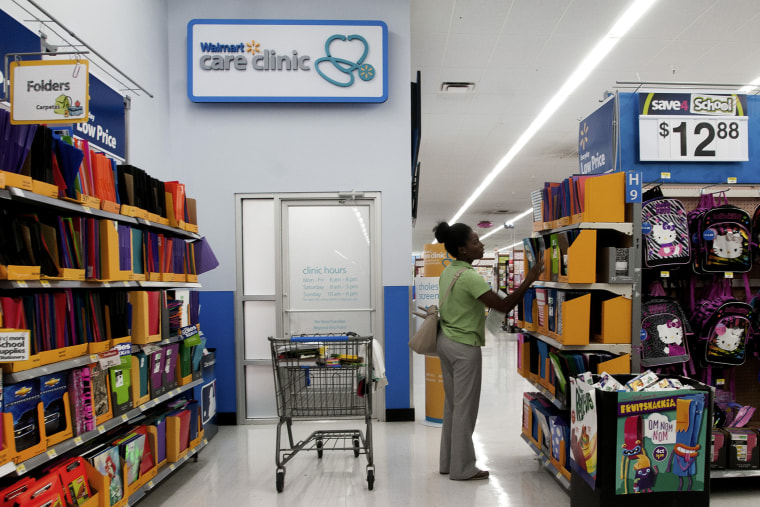Wal-Mart is evolving into far more than a retail chain. After years of gradual diversification, the company took another big step into a non-retail market on Monday, when it announced that it would now assist customers in selecting private health insurance plans.
The company will partner with DirectHealth.com to launch the in-store program Healthcare Begins Here, offering Wal-Mart customers the opportunity to discuss their health care options with insurance agents. A joint statement from the two companies says that customers over the age of 65 will be able to choose from 1,700 plans offered by 12 different providers; younger customers will have "access to thousands of Health Exchange plans from more than 300 leading carriers."
This is not Wal-Mart's first foray into the health care business. Since 2005, agents attached to individual providers have been posted in various Wal-Mart locations. The company decided to partner with DirectHealth.com because customers "wanted more options," according to Wal-Mart spokesperson Molly Blakeman.
Over the past several months, Wal-Mart has also experimented with offering medical services directly. A handful of Wal-Mart locations across the country now include primary care clinics, although the company not yet committed to expanding that practice.
In other words, Wal-Mart is aiming to establish a foothold in a lot of different industries at once. Just two weeks ago, the company announced another partnership with the banking service Green Dot, which will now offer low-cost checking accounts in Wal-Mart stores. Increasingly, its big box stores are a place where customers can not just shop but seek medical care, do their banking, and fulfill a number of other basic needs.
The company's efforts at diversification coincide with a period of sagging domestic sales, likely brought on by such factors as market over-saturation, increased competition from its low-cost dollar store competitors, and the dwindling cash reserves of its low-income customer base. The company appears to be trying to offset those trends by tapping into low-income America's other needs: low-cost banking alternatives, primary medical care, a guide to choosing cheap insurance, and so on.
"We're always looking to be disruptive for our customers and find better ways of doing things," said Blakeman in response to a question about disappointing sales and the company's experimentation in other markets.
